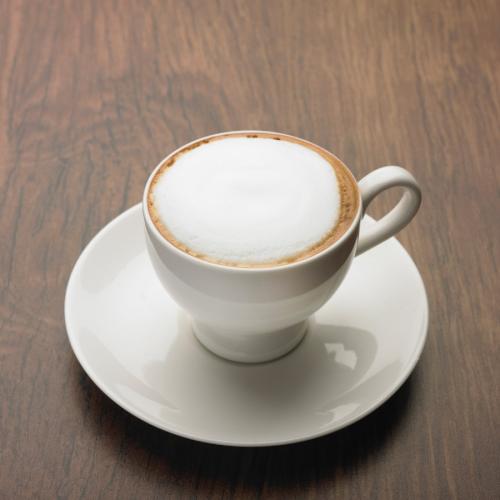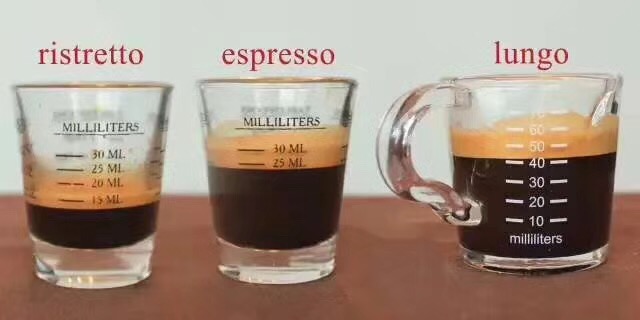The embarrassment of macchiato | the difference between espresso, macchiato, latte and cappuccino
For professional baristas, please follow the coffee workshop (Wechat official account cafe_style)
The word "Macchiato" comes from Italy and means "marking".
It is common in Italy that a very busy barista has several cups of espresso waiting to be served to the guests in the queue. If one of the guests likes to add a little milk, the barista will pour in a pinch of milk as a mark. If you simply pour a little milk into the freshly made Italian coffee, the milk will soon disappear in Klima, and it will be difficult to judge what kind of drink it is with the naked eye.

About a decade ago, many quality-focused cafes made different changes to macchiato, defining macchiato directly as a drink directly covered with milk foam on espresso, usually on consumer request.
Such consumers want slightly larger, less flavored, sweeter drinks, but some baristas make macchiato to show off their ability to pull flowers in very small cups.
| | Macchiato's embarrassment |
With one confusing exception, Starbucks has a drink called caramel Caramel Macchiato, which is a very different drink, closer to a latte, but marked with caramel sauce. The name can cause confusion among some consumers, especially in North America, so some cafes specifically mark their traditional macchiato.
Caramel macchiato
Vanilla syrup, fresh steamed milk and velvety silky foam, with a mellow espresso and a layer of caramel sauce.

How to tell the difference between Eepresso,Ristretto,Lungo and these coffees?
Espresso (Eepresso)
Definition of espresso: espresso must come with a krima, and more precisely, the gouache ratio is about 1:2.
Espresso espresso (Ristretto)
The original name of this coffee drink is ristretto, and the Italian noun stands for "limited quantity" (restristed). The concept is to make a cup smaller and more full-bodied than standard espresso. With the same amount of coffee powder but a relatively small amount of water extraction, the coffee is ground more finely, so it can maintain about the same extraction time, so that all the pleasant aromas in the coffee can be extracted.
Long extract espresso (Lungo)
Recently, long-extracted espresso is less fashionable for the fine / tasty coffee industry. An espresso machine is used to make the same amount of coffee powder, but it is extracted with two to three times the amount of water to cook a larger cup of drink that tastes thinner. For consumers with more experience, espresso with long extract lacks richness and taste, and is usually scary / scary, with more bitterness and soot flavor.
But recently, there is also a trend in the fine / quality coffee industry: using long extraction to cook shallowly roasted coffee beans, the coffee is highly complex and balanced, and I also think it is delicious. If you have ever been bothered by how to balance the acidity of an espresso formula, try long extraction, with a slightly thicker grinding thickness and a slightly faster flow to avoid over-extraction.

The difference between three strong coffees is broken down into numbers:
1 Ristretto
Powder: 7-8 grams of coffee grinding powder
Extraction time: 15 seconds
Extraction liquid: 15-20cc
Already the amount of Espresso to extract, extraction as long as the first half of Espresso, that is, we like to drink flatwhite practice.
2 Espresso (espresso)
Powder: 7-8 grams of coffee grinding powder
Extraction time: 20-30 seconds
Extraction liquid: 30cc
3 Lungo
Powder: 7-8 grams of coffee grinding powder
Extraction time: 50 seconds-1 minute
Extraction liquid: 50-60cc
Distinguish between white coffee Flat White and latte LATTE, Cabo Cappuccino
Deaton Pigot, chief barista of Australia's Toby's Estate Cafe, once called Flat White a "wet cappuccino", while the New York Times called it a "small latte". Levi Hamilton, a barista at Workshop Espresso, thinks both claims are wrong.
"the real difference is the foam on the coffee. Cappuccino translates to "foam hat", so cappuccino coffee has very thick milk foam. On the other hand, the Flat White has only very thin foam, so it is more delicious and flat. " According to wiki, it is a kind of latte art, similar to cappuccino and latte, but different.

The concentrated content is different.
Cappuccino (one 180ml) or like latte (one 200ml), single espresso
Flat white (one cup of 200ml) is based on two servings of espresso, and in some places esp will be extracted for a longer time, two portions of Ristretto (Ristretto:1:1 's Espresso)
The difference between milk bubbles
When the foam is micro foam, the loose foam at the top of the distillation container is discarded and the fine milky milk is poured into the coffee to form a smooth, soft texture, which is called Flat.
The treatment of milk shows that it is different from latte and cappuccino: the dry foam of cappuccino is of different texture, which is more like floating on the liquid, because of the different degree of heating. Compared with the cappuccino, which is directly used to boil the milk, the milk is generally heated to 60-70 degrees, which is 25% higher than the original quantity, and the Velvet micro-foam is used.
At the entrance of the latte, you will feel a thick layer of milk foam above 1cm, which makes the taste more soft. And Flat White although there are some bubbles, but more delicate, soaked in the 5mm below, milk and espresso fusion is very high, the taste is more silky.
The difference in taste
Cappuccino is supposed to be fluffy, while flat white is lubricated. More people will confuse the flat white with the latte. The bigger difference is that there is a layer of milk foam on the top of the latte, so it tastes more milky.
Flat white uses thick milk (micro foam) instead of sparkling milk (froth or bubble).
Important Notice :
前街咖啡 FrontStreet Coffee has moved to new addredd:
FrontStreet Coffee Address: 315,Donghua East Road,GuangZhou
Tel:020 38364473
- Prev

Buy a bean grinder to pay attention to details Buy a bean grinder that suits you
Figure taken from www.espressocoffeeshop.com/index.php? route=product/productproduct_id=151 This is a broken machine Isomac Macinino Pro Inox light appearance, all stainless steel, short and lean, but also hanging Italian halo purchase price of about 1500 yuan to 2000 or so looks very good, but the actual use is simply amazing
- Next

Coffee grinder manufacturer Mahlkonig latest news EK43 upgrade display
For professional baristas, please follow the coffee workshop (Wechat official account qianjiecoffee) K30 Twin 2.0. All pictures are provided by Mahlkonig. Coffee grinder maker Mahlkonig has responded to this year's hot demand by showing off a variety of new designs at the recent HOST Milano show. K30 product lines, including K30 and K30 Twin, have passed
Related
- What is the Philharmonic pressure? How to use Philharmonic pressure to make delicious coffee
- Why does a hand grinder have more fine powder than an electric grinder?
- In addition to the hot mom, what is the difference between the versions of EK43 | ditting and Mahdi ek43?
- What kind of equipment do you need to make coffee by hand? Introduction to novice starter cooking equipment tools
- Espresso needs to be ground how thick and thin scale entry Italian Coffee Machine Bean Grinder investigation and Grinding course
- How much does it cost to open a small private cafe? How much does it cost to learn coffee? How to operate it?
- The difference between the flavor characteristics of hand-brewed coffee and coffee maker is hand-brewed coffee really better than coffee maker? Can I use a coffee machine to make coffee beans by hand?
- The difference between 01 and 02 of hario v60 filter cup what is the difference between 01 and 02 filter cup opening and cooking flavor
- What's the difference between the smart cup and the French kettle? Which is better, the French kettle or the Smart Cup?
- What's the difference between a smart cup and a V60 filter cup? The difference between the taste of smart cup and hand-brewed coffee

